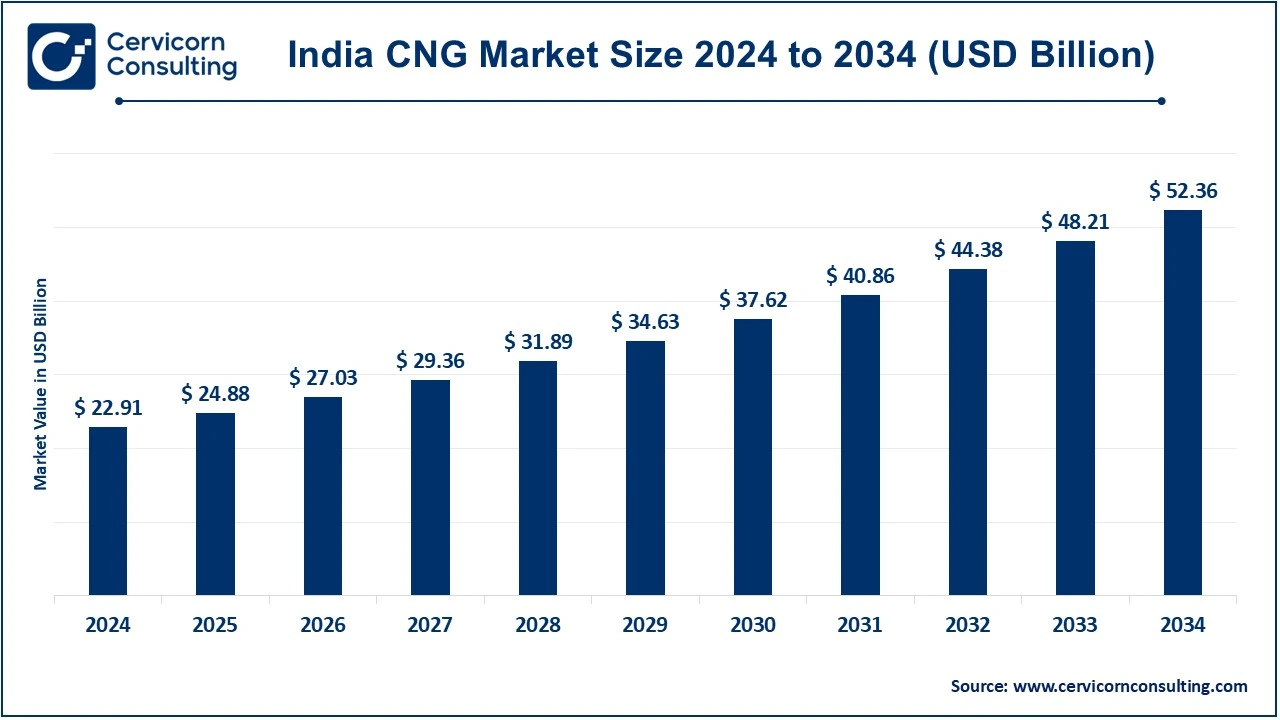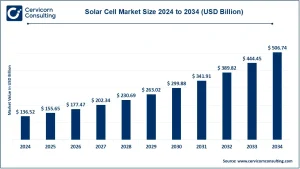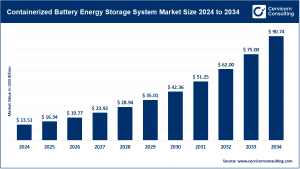Market Overview
The India CNG market was estimated at approximately USD 22.91 billion in 2024 and is expected to expand to around USD 52.36 billion by 2034, registering a CAGR of 8.61% between 2025 and 2034. This growth is primarily driven by rising fuel costs, supportive government policies, and growing environmental consciousness. CNG, which is mainly methane-based, presents a cleaner and cost-effective alternative to conventional fuels like petrol and diesel, and finds widespread application in cars, buses, and auto-rickshaws.
Get a Free Sample: https://www.cervicornconsulting.com/sample/2535
Key Market Trends
-
Rising Adoption of CNG Vehicles: Over the past five years, India has witnessed more than a 55% increase in CNG vehicle registrations. Major automotive players, including Maruti Suzuki, are launching multiple CNG models to leverage this growing demand.
-
Expansion of CNG Refueling Infrastructure: The number of CNG stations has surged from around 1,300 in 2018 to over 5,000 in 2024. Companies such as GAIL India are aggressively scaling up networks to ensure better accessibility.
-
Emergence of Hybrid CNG Vehicles: Hybrid models that run on both CNG and electricity, such as Tata Motors’ hybrid buses, highlight innovation in sustainable mobility solutions.
-
Increasing Environmental Awareness: Cities like Delhi are actively promoting CNG-powered public transport fleets to curb pollution, as CNG usage can reduce CO₂ emissions by nearly 25% compared to petrol.
Market Drivers
-
Government Support: Incentives under the City Gas Distribution (CGD) program, along with subsidies and tax benefits, are encouraging both CNG vehicle adoption and infrastructure growth.
-
Cost Advantage: CNG is 40–50% cheaper than petrol and diesel, making it a preferred choice amid fluctuating fuel prices.
-
Infrastructure Growth: Expansion of refueling stations enhances accessibility, supporting wider adoption.
-
Environmental Regulations: Rising concerns over pollution and carbon footprint are driving both consumers and industries toward cleaner fuels.
Impact of Trends and Drivers
These factors are accelerating the adoption of CNG across various vehicle segments, especially light-duty vehicles and public transportation. Urban areas with high traffic density benefit most from reduced emissions, while infrastructure expansion into semi-urban and rural areas is broadening market penetration.
Challenges & Opportunities
Key challenges include the substantial capital investment required for infrastructure and competition from electric vehicles. Conversely, opportunities arise from innovations in hybrid vehicles, industrial applications of CNG, and government-backed expansion initiatives.
Future Outlook
The India CNG market is poised for continued growth, projected to reach USD 52.36 billion by 2034 at an 8.61% CAGR. The adoption of hybrid CNG-electric vehicles, coupled with the expansion of refueling networks, underscores the country’s ongoing transition toward cleaner and sustainable energy alternatives.
Reference: Cervicorn Consulting – India CNG Market



